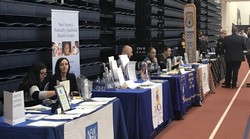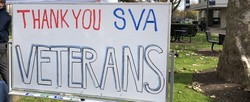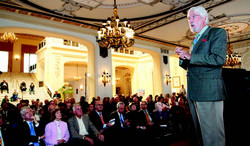Last semester, the University introduced a new plagiarism detecting program called Turnitin. The program scans essays that are submitted to eCampus and compares the words to similar papers within the database. The program includes papers from other universities, as well as scholarly databases. The program high lights the areas that are similar and estimates a percentage of how much the paper is plagiarized.
Using Turnitin is not mandated by the University. Instead, professors are given the option to use the program in their classes and will not be penalized if they do not choose to use it.
Professor Noah Lippman teaches in the history department at the University. He said that numerous teachers in the history department have begun using the program. “It is a great program; I have been using it for years,” Lipman said. “It saves me a lot of time and I no longer have to worry about students cutting and pasting. Now I am guaranteed to have students’ original work.”
Other professors view the program as very beneficial. They are able to concentrate on the content of the students’ papers as opposed to trying to determine whether the student has plagiarized. Professor Lauren Sampson has been teaching at the University for several years now and has taught a vast majority of communication classes. This past year, she decided to begin using Turnitin in her classroom. “I believe that Turnitin is helpful to both teachers and students,” Sampson said. “As a teacher, I know there are times when students aren’t fully aware that they’re plagiarizing, so when something comes up on Turnitin, it gives me the opportunity to help them fully understand the concept.”
Professor Susan Stever teaches English 101 and 102, and she also just recently began using the Turnitin program. Stever attended a workshop at the beginning of February and learned how to effectively use the software. “It’s a brand new program and we’re excited to use it,”
Stever said. She added that she used the program in her English 102 class because her students write essays that include many quotations from books. “In 102 we work on how to use other people’s words. You want to feel comfortable when using their words in your essays and use them correctly. Students often inadvertently plagiarize without ever knowing it,” she said.
The professors are here to assist the students by teaching them how to correctly cite a source. “We are here to here students by using Turninit, we are not trying to police anybody,” Stever added. The program ensures that students are writing their own, original work, which reveals that the students are learning and applying their knowledge.
University students have become more conscious of their work after being told that Turnitin can scan their papers for plagiarism. “I think it is a good idea,” said Nicole Adamusik, a sophomore at the University. “Students will no longer get away with copying work from the Internet. Students will learn to fully engage in their work as opposed to robbing themselves of their education by cheating, which is plagiarism.”




